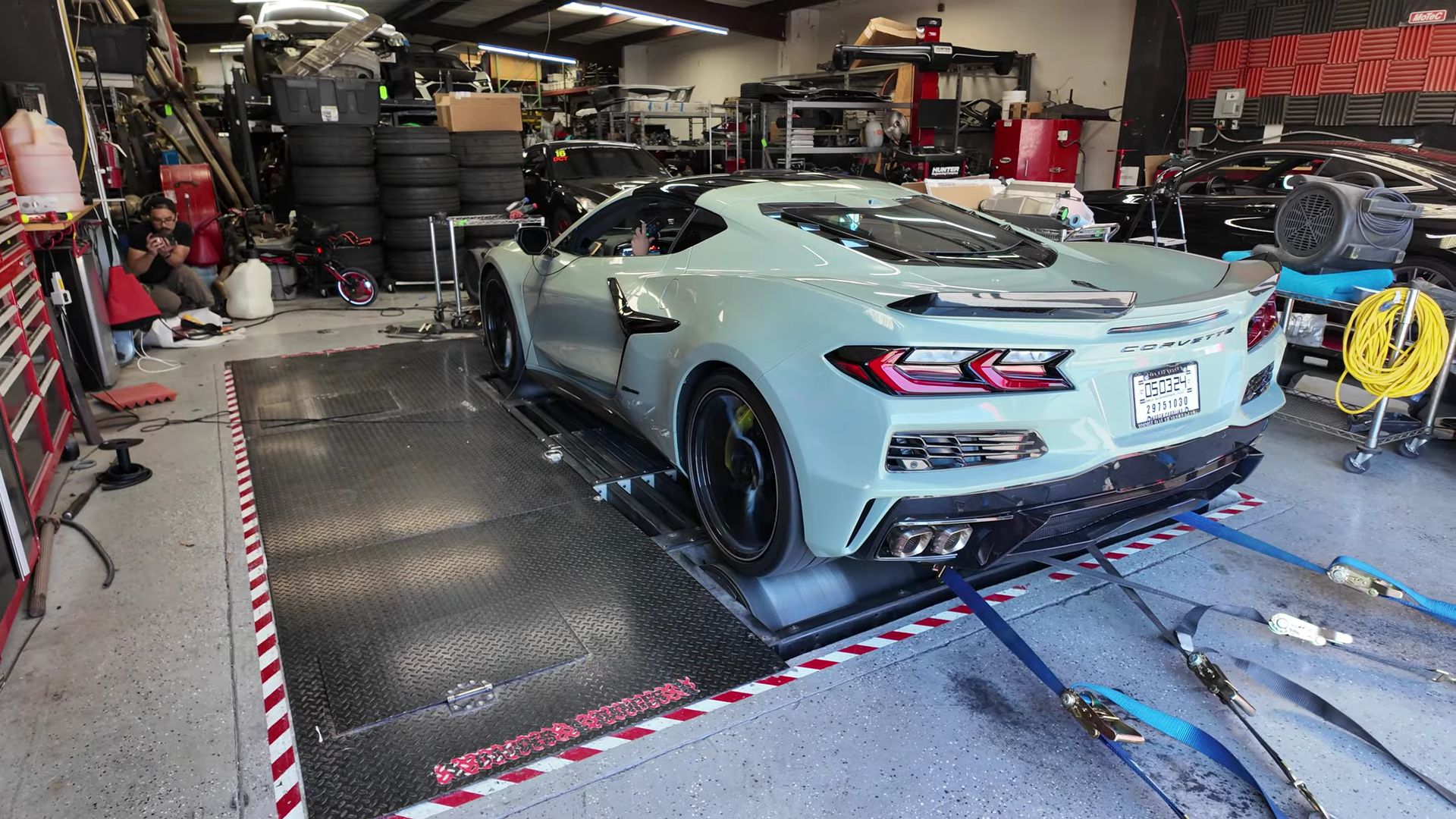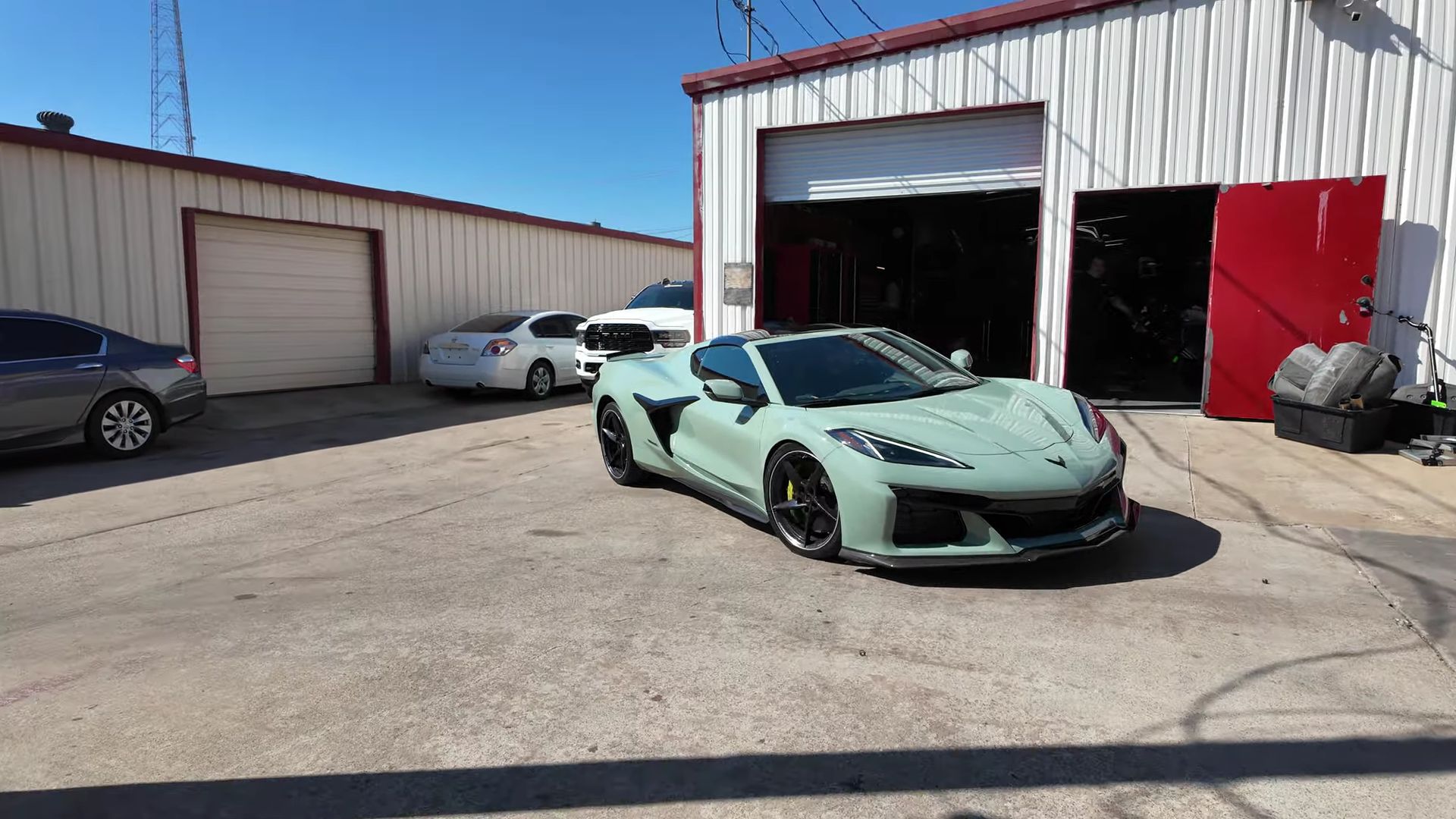While the E-Ray Corvette doesn’t hold the title of the most powerful series-production Corvette, that distinction belongs to the C7-generation ZR1, soon to be succeeded by its eagerly anticipated successor. Chevrolet’s figures quote 655 horsepower from the rear-mounted small block engine and front-mounted electric drive unit, with torque estimated at 592 pound-feet or just under 803 Nm.
So, how much power reaches the wheels? According to the Jotech Motorsports all-wheel-drive dynamometer, the E-Ray delivers 568 horsepower and 619 pound-feet (839 Nm), 562 horsepower and 620 pound-feet (841 Nm), and finally, 560 horsepower and 611 pound-feet (828 Nm) in successive pulls. These numbers reveal that Chevy’s quickest series-production Corvette packs even more torque than advertised.

In terms of wheel horsepower, 562 equates to 94.93 percent of the stated 655 ponies. These impressive figures, coupled with the instant peak torque of the electric drive unit, promise exhilarating straight-line performance. Pictured is Jesse Iwuji’s C8 E-Ray, a familiar face from stock car racing and an officer in the United States Navy Reserve. Painted in Chevrolet’s Cacti Green, Jesse’s Corvette has showcased its performance prowess with 10.6-second passes at the Texas Motorplex, equipped only with drag radials.
While the E-Ray continues to impress, Chevrolet has its eyes set on even greater feats. Instead of simply turbocharging the E-Ray’s 6.2L small block, GM has bestowed twin turbos upon the Z06’s 5.5L engine to create a monstrous twin-turbo V8 for the all-new ZR1. Expected to be revealed in the summer of 2024 as a 2025 model, the ZR1 is rumored to surpass 800 horsepower, ushering in a new era of Corvette performance.

